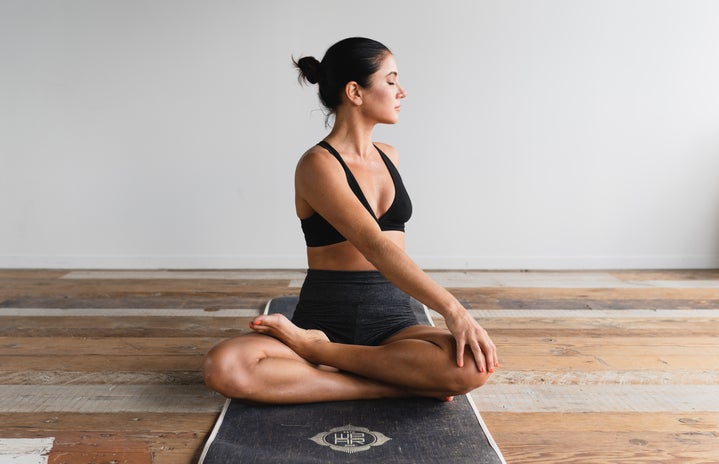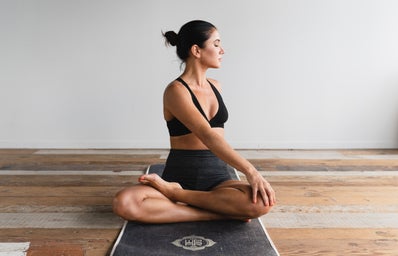For as long as I can remember, the term self care was always something that conjured up images of bath bombs and expensive lotion. Or a girl laying down in luxurious pajamas, her face covered in a mask and her eyes scanning the inside of a Vogue magazine. Self-care meant spending money, and it was somehow always intrinsically connected to one’s outside appearance. “Taking care of yourself” meant spending your hard earned cash on things like bath salts, exfoliators, new-age vitamins, a $75 “This Smells Like My Vagina” candle (yes, this is real, you can find it on goop.com), and literally anything and everything. Look on Nordstrom or Anthropologies websites and you’ll find a whole “wellness” titled sub section dedicated to an endless scroll of products that promise a healthier, happier, and more stress free life. Simply type in “self care” on Google’s search engine and you’ll be met with ads for products that promise to drastically improve your life in one way or another.
Yet it wasn’t until recently that I realized how messed up this was. The women’s wellness industry has been packaging and selling us a lie for years: the idea that our wellbeing is intrinsically connected to the amount of products we buy (specifically products that influence our outer appearance) and money we spend. To give you some perspective, the global wellness economy in 2018 was valued at $4.5 trillion, representing 5.3 percent of global economic output. In addition, the beauty sector is the largest part of the wellness market, valued at a total of 1,083 billion dollars in 2017. And since then the numbers have only been growing.
So what is so wrong with this? Well, lots of things. First of all, it connects wellness to beauty in a completely convoluted way, convincing women that their wellbeing is intrinsically connected to their outside appearances. Why is beauty even considered a section of wellness? It’s because influencers and brands aren’t really selling “wellness”, they’re selling the “look” of wellness. The look of wellness being perfect glowing skin, slim bodies, and an effortless “natural” look. Of course, this ideal is far from realistic. Australian model Elle Macpherson is a perfect example. In a recently posted video on Vogue’s Youtube channel, she shares her “beauty secrets” and wellness routine, in which she shares everything from supplements to serums (of course including her new WelleCo skin capsules). She starts the video by saying “I am going to share with you my beauty routine, which is really a wellness routine disguised as a beauty routine, because I truly believe that when you’re well within, it shows on your skin.” She then goes on to share with us a multitude of products including a $72 gut support supplement, a $360 anti-aging face cream, and a $68 foundation stick. In total, the cost of all the products she uses comes out to a whopping $1,559 dollars (not including her own WelleCo products). Ummmm, okay girl, really? After the intro, she goes on to say “When I turned 50, I started to notice some new changes in my body. I was sugar addicted, sleep deprived, adrenally stressed, and it showed, you know, it showed on my skin, it showed on my body, […] I changed my lifestyle and within a few months, people started to say to me, “God, you look amazing, and what are you doing”.
I’m all for encouraging others to make health changes (within they’re means) to improve their wellbeing, but what I disagree with is Macpherson brushing over the effect all this stress and fatigue had on her mental health and skipping straight to the effect it had on her appearance, as if her inner feelings were secondhand.
Not only is this problematic for defining wellness as something that requires spending an insane amount of money (money that most people can’t afford to spend), it also suggests the idea that one’s outside appearance is far more important than one’s inner wellbeing. Coupled with the fact that many beauty products (like exfoliators, anti-aging lotions, and serums) are advertised as wellness products, it further suggests that one’s well being is dependent on and just as important as one’s physical appearance.
Everywhere around us women are bombarded with the subtle (and even not so subtle) messaging that our looks are the most important thing. Which is why it’s problematic that even within the so-called “wellness” industry, we are still taught that our beauty is what really matters. There is no escape, even in the one place there should be: self care. Self care should be about prioritizing your mental health and focusing on your own needs. It should be about cutting yourself some slack and giving yourself grace, not holding yourself to an unattainable beauty standard that requires spending copious amounts of cash. I hope in the future more people can open their eyes to this fact, and more women can realize that their wellbeing should never be put second to their looks. Nor should it require spending money on expensive products that tout false and unrealistic claims.


